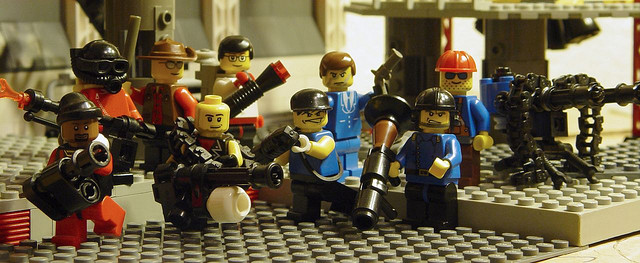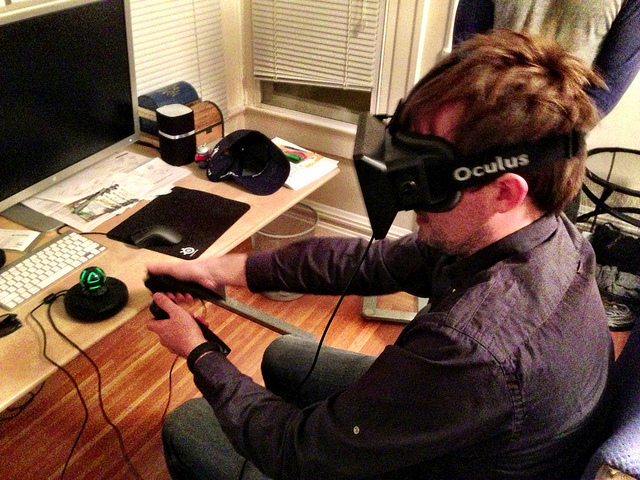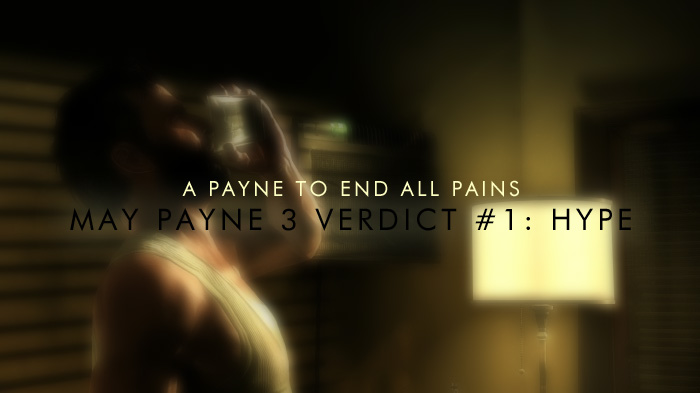

In 2012, Valve hired Greek economist Yanis Varoufakis to help them manage the booming Team Fortress 2 economy. If that sounds absurd to you, consider this: The TF2 item trading economy was worth $50 million USD by 2011, and shows every sign of exponential growth.
Virtual economies are rapidly growing in scale and complexity as people spend more and more time and money in online games. As of 2012, of the users making content for TF2, the highest-paid made half a million dollars that year. The average payout was more than $15,000. Gabe Newell vividly described the consequences to their payment processor, PayPal.
“The first two weeks that we did this we actually broke Paypal because they didn’t have – I don’t know what they’re worried about, maybe drug dealing – they’re, “like nothing generates cash to our userbase other than selling drugs”. We actually had to work something out with them and said “no … they’re making hats.”
It’s not just TF2, either. World of Warcraft has a GDP larger than Samoa’s. Eve and Second Life sport similarly large economies, and all of them are growing. Eve employs several professional economists to keep a close eye on its laissez-faire capitalist utopia, and a single Second-Life bank collapse in 2007 cost the bank’s customers more than $750,000.
![eveonlinescreen]](https://game.lhg100.com/Article/UploadFiles/201602/2016020210481850.jpg?26523c)
The IRS taxes profits made from playing games (though, sadly, you can’t write off your losses). From this perspective, hiring an economist makes a lot of sense — that’s a lot of user money moving around, and a collapse of the in-game economy represents a major threat to the fun that fuels these games.
A bank run or an inflationary spiral could seriously disrupt enjoyment of the game and cost the game’s owners a lot of money. Companies that run large videogames that allow user-user trade interactions had better be hiring economists, if they plan to be running large video games a year from now.
As for the economists themselves, they’re happy as clams. Yanis Varoufakis is excited about the potential for virtual worlds to teach us about meat-space economics.
“Economic theory has come to a dead end — the last real breakthroughs were in the 1960s. But that’s not because we stopped being clever. We came up against a hard barrier. The future is going to be in experimentation and simulation — and video game communities give us a chance to do all that.”
All of this craziness is symptomatic of a larger trend: the growth of virtual assets and virtual worlds. People are spending more time in online games than ever before, as multiplayer gaming makes the same slow transition from counter-cultural to just plain cultural that comic books and science fiction have made over the last fifty years.
League of Legends made more than half a billion dollars in 2013, mostly on cosmetic items and other microtransactions. People have spent hundreds of dollars on special ships, rooms, and towels in Star Citizen, a space game that isn’t even out yet. When you combine that trend with unrestricted player trade, the result is virtual economies of unprecedented scale.
At first blush, this looks a lot like tulip mania: a crazy, unsustainable, obsessive fascination with an obviously worthless asset. It’s easy to dismiss the people who sink significant sums of money into video game stuff as nuts — and, it’s true, some people do have problems.
There are people in the world who can’t handle the Skinner-Box addictive potential of games responsibly, and some of those people wind up blowing tens of thousands of dollars on microtransactions or otherwise neglecting their lives and responsibilities. These stories are often tragic, but it’d be a mistake to interpret them as a representative sample of the participants in video game economies.

In order to understand why people value virtual items, think about why microtransactions in mutiplayer games outsell singleplayer microtransactions by such a wide margin. The most profitable free to play games are social multiplayer games with persistent friends and rivals.
Think about TF2: most of the TF2 economy is concerned with cosmetic items, not functional ones, and mostly hats (which you notably can’t see in a first person game during normal gameplay). The only value that they provide to the user is that they change the way you’re perceived by other players.
Hats and cosmetic items are like designer clothes in the real world: they’re a way of controlling social perception, and defining the narrative about yourself. People are desperate for self-expression, and Valve has found a way to monetize that desperation.
There’s another element as well,which is the degree of diversity. Back when there were ten hats, they were a joke; nobody cared. Now that there are more than eight hundred, some of which are very rare, people have completely lost their minds.
Cosmetic items, selected among hundreds of choices with dozens of possible variations are a much stronger statement about yourself than putting on the same beanie that everyone else is wearing. Video games are becoming more of a social medium, a way of spending time with friends, and it’s not surprising that people are willing to spend money to control how they’re perceived in that social medium.

The effect is even stronger in MMO’s, particularly those with lots of player customization. Think about the effort that people put into customizing every detail of their Minecraft lairs. You can imagine that if Notch premiered the option to purchase new cosmetic blocks and items, plenty of players would be willing to spend a lot of money to get that extra level of detail and uniqueness in their living space.
The things you own and create in online games are a reflection of yourself, and people care about them in the same way that they care about their living space in real life. WildStar, a popular new MMO, has an unlockable animal-crossing mode that lets you customize your base in endless detail, and it’s incredibly popular. In a lot of ways, Second Life (despite being a miserably buggy, fetishist-riddled mess of a game) was ahead of its time, allowing users to customize every aspect of their homes and appearances, and monetizing it all with a currency that the company itself buys and sells with significant margins.

The trends that fuel virtual economies are not going away any time soon. In fact, several recent innovations, including Bitcoin and the Oculus Rift may fuel the growth of virtual worlds to ever greater heights.
The Oculus Rift, scheduled to launch sometime before the end of 2015, is going to bring whole new genres of games with it. Virtual Reality emphasizes many of the aspects of online goods that make people value them. Virtual objects in virtual reality are perceived as real, physical objects, and that makes them more valuable.
Social experiences in VR are more powerful than social experiences on a screen, and that emphasizes the need to control how you’re perceived by those around you. VR spaces feel like real spaces. VR Minecraft is one of the coolest things available for the headset right now, due largely to how darn neat it is to be able to step inside the buildings that you spend so much time creating.

Virtual reality makes small things valuable. Being tall or short matters in VR: it changes the way you see the world, and the way other people perceive you. Large characters are genuinely intimidating when you have to crane your neck to meet their eyes.
The spaces you inhabit have the same psychological effects as real spaces: long drops are intense, high ceilings are spiritual, and huge structures are awe-inspiring. These effects feel as real in VR as they do in real life, and people are probably going to make a lot of money selling them.
People will spend money on hats, and they’ll spend money to customize their hangouts. They’ll spend money on virtual pets and cars and nice virtual views. And why shouldn’t they? You get value from some things just from seeing them, and seeing things in virtual reality is nearly like seeing things in real life. You can’t touch virtual objects yet, but give it a few years.
One of the major limitations to the growth of virtual economies is that all of the assets in those economies exist at the pleasure of the companies that run them. Holding assets in World of Warcraft gold is unimaginable, because there’s no guarantee that Blizzard won’t decide to shut the game down tomorrow, or simply debase the currency with one of their constant streams of updates and expansions.
The creation of Bitcoin provides a way around that. Bitcoin is a powerful new kind of electronic currency that’s hosted in a fully distributed fashion. We can imagine future virtual economies using re-skinned Bitcoin or other cryptocurrencies as their in-game money, effectively allowing virtual commerce to flow effortlessly in and out of the virtual world, a sort of free trade movement for videogames.
You might sell a mount in World of Warcraft, and then turn that money around into a starship in EVE online, then sell that and buy lunch. There’s no risk to holding your assets in in-game currency, because the in-game currency is just, well, currency. That means more liquidity in game-markets, which means more economic growth.
Furthermore, it’s easy to imagine some persistent online games running their servers peer-to-peer to reduce their hosting costs, as well as to help provide a degree of confidence to investors that the game’s economy will continue to exist in the future for years to come, regardless of the solvency of the game’s original creators.

So, who stands to make money off this growth? When the getaway car of virtual economics goes speeding off into the sunset, who’s going to be holding the bag?
If the rise of e-commerce has taught us anything, it’s that economies in which goods can be produced for free and sold for not-free are extraordinarily profitable. Consider the rise of online distribution of movies and games in recent years. Naturally, the companies like Valve and Linden Labs and Blizzard and CCP and Facebook that own the economies and can skim a few (or a few more) percentage points off the top are going to be the biggest winners here. Being one of these companies, in these conditions, is very much like being the supreme dictator of a small nation. Whoever makes the first good open-ended, monetized virtual world is going to be able to buy God.
In particular, Facebook is explicitly interested in creating a VR metaverse, a platform for social VR interaction and virtual commerce that will likely, in the long run, prove its two billion dollar investment in Oculus a wise one. In a Facebook post regarding the acquisition, Mark Zuckerberg said,
“This is really a new communication platform. By feeling truly present, you can share unbounded spaces and experiences with the people in your life. Imagine sharing not just moments with your friends online, but entire experiences and adventures.
These are just some of the potential uses. By working with developers and partners across the industry, together we can build many more. One day, we believe this kind of immersive, augmented reality will become a part of daily life for billions of people.”
However, there’s plenty of room for individuals to turn a profit as well, particularly those with artistic talent. Virtual worlds provide a unique opportunity to turn art into mass-produced consumer goods with no infrastructure investment or startup capital. In a virtual world powered by user-created content, like TF2, anyone with the knack to do so can start cranking out content, and earn money on every unit sold.
Some of you, perhaps already bitten by the Candy Crush / Sims franchise model of exploitative microtransactions, have made it this far into this article with an increasingly sour expression on your face, and are gearing up to jump to the comments section to decry the evils of capitalism in general, and EA in particular. Before you do, please take some time to watch this Valve presentation on microtransactions in TF2.
This provides a glimpse at what positive video game economies and microtransactions look like. Valve gives a number of recommendations in that video, but the key idea is to make sure that having economies and microtransactions in your game make the gameplay experience better for users who choose not to spend money on your game, and to ensure that users who do choose to spend money do not regret their purchases.
A major part of this is user-created content. By allowing users to add content to their games and monetizing it, Valve makes a profit and also creates an incentive for users to produce lots of high-grade content for their games, from hats to guns to maps. This content is distributed randomly to other players, and is accessible via trade, which provides value to players who don’t pay for content. Gabe Newell himself puts it this way:
“In Team Fortress 2, the community itself makes 10 times as much content as we do,” he said. “We have people who are making $500,000 a year selling things in the workshop. We can’t compete with our own customers. Our customers have defeated us, not by a little, but by a lot.”
The good, sustainable micro-transaction enabled games of the future will be fun to play, they will be chock full of good content, and their economies will be the size of modest nation states. The future is inbound, and it’s going to be much, much weirder than you think.
What do you think about this future virtual economy? Do you see yourself as embracing it, or getting lost in it? Share your thoughts in the comments section below.
Image credits: “Money“, by Tax Credits, “Eve-Online-Orbiting” by Fractalli Eclipse, “Group Shot” by B. Morro, “Medic’s TF2 Birthday” by Yun Huang Yong




 A Payne to End All Pains: Max Payne 3 Verdict — The Hype
A Payne to End All Pains: Max Payne 3 Verdict — The Hype PS4s Uncharted Gets Personal
PS4s Uncharted Gets Personal Lollipop Chainsaw: What You Might Be Missing
Lollipop Chainsaw: What You Might Be Missing Tomb Raider Series: The Evolution of Lara Croft
Tomb Raider Series: The Evolution of Lara Croft Top 20 Worst Sniper Fails Caught on Video
Top 20 Worst Sniper Fails Caught on Video